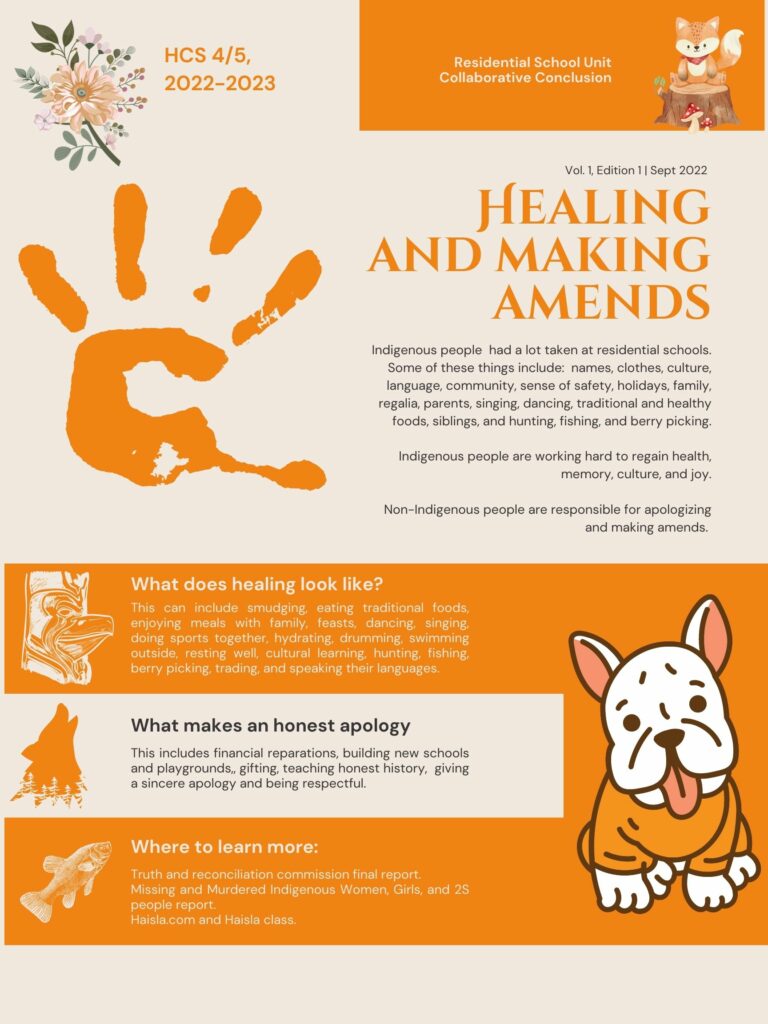
The above poster was the collaborative summative evaluation generated entirely by my grade 4/5 students at the Haisla Community School. Students spent a month learning about residential schools, and the colonial and genocidal contexts in which they were created. Students discussed the ways these systems continue today, and how Indigenous communities are actively undoing the harms that were done to them. It is worth noting that almost all of my students are Indigenous and living on or near their traditional territories.
This unit was, for me, the product of significant reflection on the grade 4 curriculum, on how to appropriately teach in the lead up to orange shirt day, and on standard 9 of the Standards for Educators. I knew it was my responsibility to teach this history honestly and I was also cognizant of my positioning as a white woman standing in front of students who largely have personal intergenerational trauma as a result of the subject matter being taught.
I am particular struck by one sentence in Standard 9, which reads, “Educators contribute towards truth, reconciliation, and healing.” I felt equipped to teach the truth, and I’m not quite sure how I personally understand the word reconciliation, but contributing towards healing felt like an enormous endeavor. What I could not have anticipated was the way my students undertook that component themselves.
In their reflections on the jobs of Indigenous peoples in the word of undoing the harms of residential schools I was particularly struck that they chose to write about reclaiming joy. As they expanded on what healing looks like, they spoke of family, feasting, dancing, but also resting and playing. My students showed me in this unit that when asked, Indigenous people, even kids as young as nine and ten years old, know what is needed to heal – if they can be given a safe and supportive place to undertake that work.
Leave a Reply